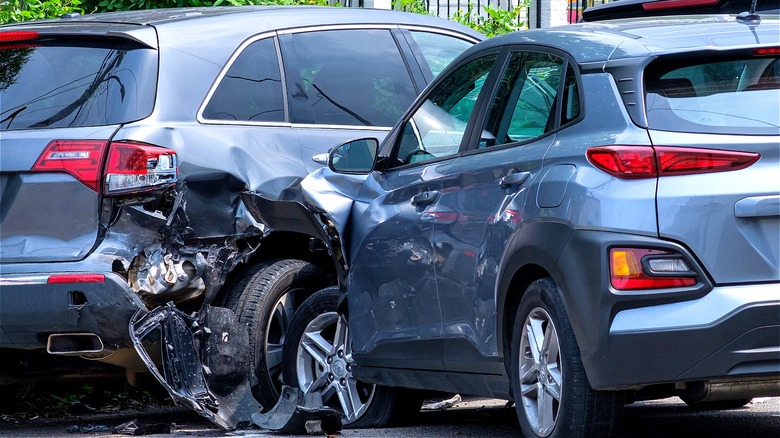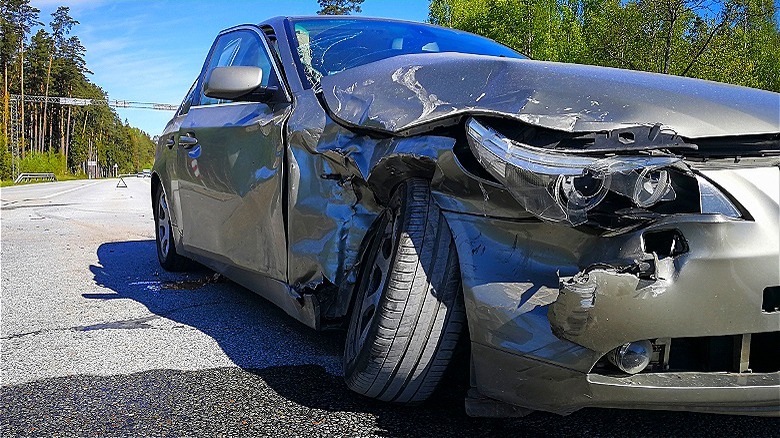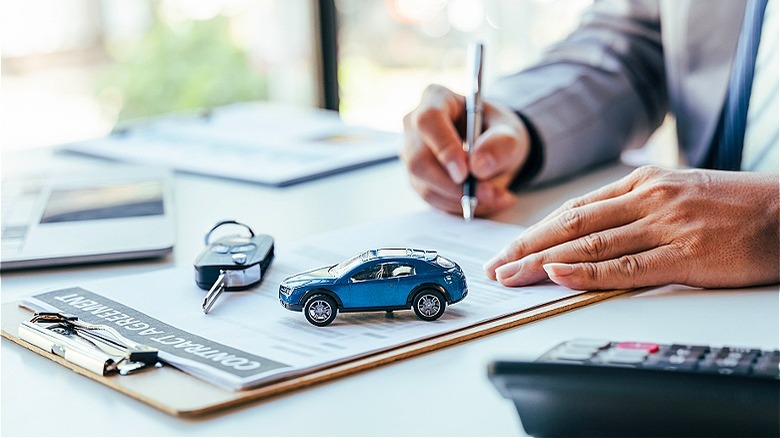What Is Gap Insurance And Why Is It Important?
It's a sad fact that as soon as you drive away from the dealership in your newly purchased vehicle, its value drops considerably. In fact, this sometimes remarkable depreciation is one of the main reasons why many personal finance gurus recommend against purchasing a brand new car. However, let's assume that you forgo that advice and buy or lease a new car anyway. After all, you need to enjoy life a little, right?
Then, disaster strikes. Your brand new car is involved in an accident that damages it to the point of being totaled. That is, the cost of repairing the vehicle isn't practical, or the vehicle may have such severe damage, like a bent chassis, that it's not safe to repair at any cost. Hopefully, no one was seriously injured in the accident, but the real pain could start when you contact your insurance company.
That's because in instances of a total loss, insurance companies typically pay out the current market value of the vehicle, which may be lower than the amount still owed on a loan. (And by the way, that same policy also applies to vehicles that are stolen and never recovered.) In such cases, having gap insurance can help make up the difference.
How gap insurance works
Why is receiving a check from insurance for the current market value of your now-totaled vehicle a problem? Because new vehicles can depreciate up to 20% within their first year. After that, most cars lose about 15% annually until the value begins to stabilize around four or five years from the date of purchase, according to insurance company Progressive. That means that brand-new $40,000 car you just purchased a month or two ago may only be valued at $32,000 to the insurance company, even though it still has that new-car smell.
Worse still, the settlement from a wrecked or stolen vehicle may not be enough money to cover the amount you still owe, assuming the vehicle was financed. If you took out a longer-term auto loan, didn't make a sizable down payment, or rolled negative equity from your old vehicle into the new loan, you could easily find yourself upside down. That is, owing more for the vehicle than it's now worth.
And guess what? You're personally responsible for paying the shortfall between the loan amount, and the value of the totaled vehicle. In the case of the $40,000 new car, if you receive $32,000 from your insurance company, but owe $36,000 on your loan balance, you'll be on the hook for paying $4,000 to the lender. Technically, gap stands for "guaranteed asset protection," but it might as well literally mean protection from having to pay the gap between the current value and loan amount.
It pays to shop around
The automobile dealership where you purchase your new car may offer gap insurance during the buying process. However, a goal of car dealers is for you to spend as much as possible, so you will likely overpay via this purchase channel.
That's not to say gap insurance isn't worth purchasing at all, though. If you've determined that the possibility exists to owe more on your vehicle than its worth, definitely investigate buying gap insurance. Just do so directly through your regular car insurance company as an add-on to regular comprehensive or collision coverage that's typically required. According to CarInsurance.com, gap insurance usually costs between $50 and $150 per year when purchased outside of a dealership setting.
If a leased vehicle is stolen or totaled, you'll still be responsible for the remainder of the lease payments (check out exactly how a lease works), which makes gap insurance just as important for leasing a car as it is for buying. Just know that many auto insurance policies tailored for leased vehicles already include this coverage, so it's best to double-check first.


